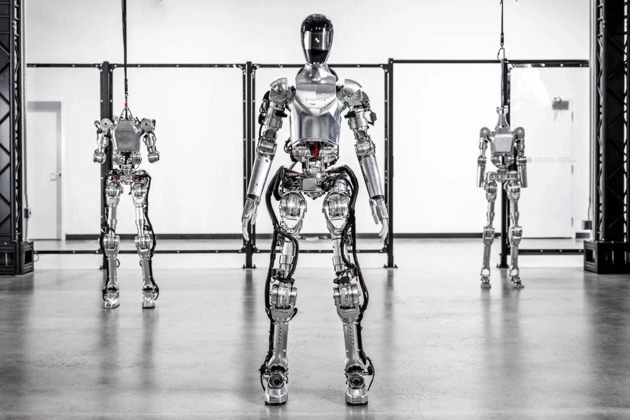
Photo/Figure
1. BMW to Deploy Humanoid Robots
American robotic startup Figure has announced a partnership with automotive giant BMW to deploy humanoid robots at BMW's plant in Spartanburg, South Carolina. Figure CEO Brett Adcock said that the collaboration will start with a small number of robots and scale up if it meets performance goals.
Commentary: This is a forward-looking collaboration that could improve factory efficiency, safety, and reduce labor costs.
2. X Platform Launches Xpayments Accounts
Elon Musk's X platform has officially launched Xpayments accounts, a step towards launching payment functionality. This has renewed speculation in the crypto community about potential integration or collaboration between Dogecoin and X. According to reports, X platform has received money transmitter licenses in 15 US states, and the company said earlier this month that it plans to launch peer-to-peer payments this year.
Commentary: This is a move that could help X platform expand its user base and revenue, and it also challenges the traditional financial system.
3. Altman to Visit South Korea to Discuss AI Chip Collaboration
OpenAI CEO Sam Altman is set to visit Seoul, South Korea, this week, where he may meet with SK Group Chairman Chey Tae-won to discuss plans to build an AI chip production network, reducing OpenAI's reliance on Nvidia. There is also speculation that Altman may discuss foundry and HBM (high-bandwidth memory) cooperation with Samsung Electronics.
Commentary: OpenAI hopes to build its own AI chip production chain through collaboration with Korean companies, improving its technological advantages and competitiveness.
4. Scientists Successfully Connect Pig Liver to Human Body
A research team at the Perelman School of Medicine at the University of Pennsylvania announced that they have successfully connected a genetically engineered pig liver to the body of a brain-dead patient, and the liver functioned normally for 72 hours in an ex vivo setting, successfully filtering blood.
Commentary: This is a groundbreaking experiment that demonstrates the potential of using gene editing technology to make animal organs compatible with the human body. It also provides a new direction for addressing the issue of organ donation and transplantation.
5. Superconductor Material Makes Breakthrough
A research team from the University of Washington and the US Department of Energy's Argonne National Laboratory has made a breakthrough in the field of superconductivity. The team studied a superconducting material with special tunability. This crystal consists of thin sheets of ferromagnetic dysprosium atoms sandwiched between layers of iron, cobalt, and arsenic atoms.
Using X-ray technology, the team demonstrated that applying a magnetic field to the crystal can reorient the dysprosium magnetic field lines so that they are parallel to the superconducting layers. This eliminates their antagonistic effect, resulting in a zero-resistance state. This means that superconductivity can be turned on and off by applying a small stress or magnetic field, while most superconductors are difficult to switch.
Commentary: This is a research with innovative significance that provides more possibilities and flexibility for the application of superconductivity.
Disclaimer: The content and data of this article are for reference only and do not constitute investment advice. Verify before using.


 川公网安备 51019002001991号
川公网安备 51019002001991号





